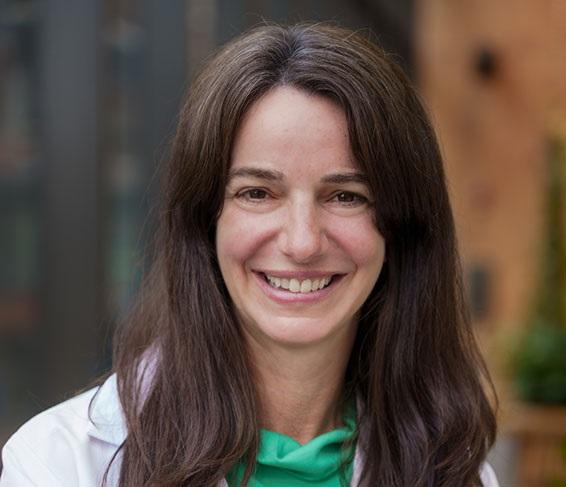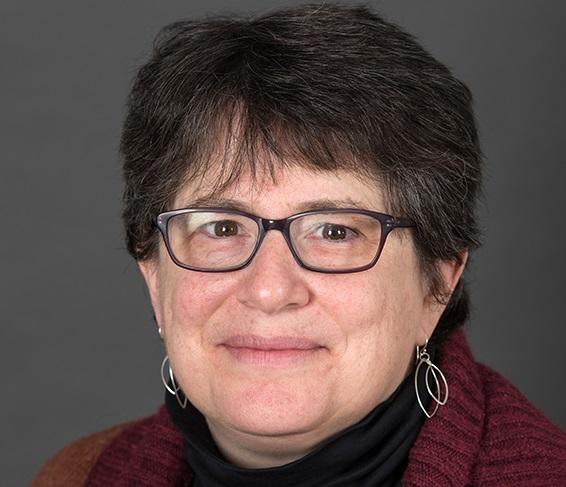CAR-T-cell shows promise in patients with lymphoma of the brain and spinal cord in early trial
A CAR-T-cell therapy known as axicabtagene ciloleucel (axi-cel) is safe and shows encouraging signs of efficacy in a small pilot trial involving patients with lymphoma of the brain and/or spinal cord, Dana-Farber Cancer Institute investigators report at the 64th American Society of Hematology (ASH) Annual Meeting.
The research features an in-depth, molecular study of individual CAR-T cells isolated from patients’ blood and cerebrospinal fluid (CSF), which surrounds the brain and spinal cord. This unprecedented analysis, conducted in collaboration with the Cellular Therapeutics and Systems Immunology Lab (CTSI), directed by Leslie Kean, MD, PhD, at Dana-Farber and Boston Children’s Hospital, reveals a surprising difference between the two CAR-T-cell populations: the cells in the CSF display a molecular signature that indicates activation of the interferon pathway, an important step in rallying the immune system. These studies are reported in two oral abstracts at ASH. “For many patients with lymphoma of the central nervous system, there aren’t great treatment options,” said Dana-Farber’s Caron Jacobson, MD, MMSc, who led the trial and will present the findings at ASH. “Our early results suggest that expanding the applicability of CAR-T cells to this indication could improve patient outcomes.”
Lymphomas can begin within the brain or spinal cord, or the tumors can spread to those sites (known collectively as the central nervous system or CNS) after they originate in other parts of the body. While the underlying biology of these primary and secondary CNS lymphomas can be quite different, these cancers are often difficult to treat, especially once the tumors evade standard treatments. In that case, patients typically do not live more than 2 years.
CAR-T cells, which are made from patients’ own disease-fighting T-cells and genetically re-wired to bind and destroy tumors, have proven effective in other forms of lymphoma. But their efficacy has not been widely studied in the brain and spinal cord. Jacobson and her colleagues knew CAR-T cells can access the brain from previous research, but the neurological toxicities that can emerge during treatment sparked concerns about deploying the therapy against CNS targets. For this reason, the team embarked on a pilot clinical trial to assess the safety of axi-cel for primary and secondary CNS lymphoma.
The trial was intentionally designed with pauses to assess safety at multiple points, and if at any time two or more treatment-limiting toxicities emerged, the researchers would amend the trial protocol. However, the study was able to proceed without interruption. The researchers enrolled patients into two cohorts, the first for those with lymphoma only in the CNS and the second for patients with lymphoma in both the body and CNS.
The results for 9 patients enrolled in the first cohort will reported at ASH. To date, all patients have received axi-cel treatment and are at least 1-month post-treatment. 78% of patients saw their tumors shrink or disappear due to the treatment, and 67% of patients showed a complete response, in which their tumors disappeared. The duration of these responses was 10 months. The median progression-free survival was nearly a year, and the median overall survival was 19 months. Although further clinical study is required, the data suggest that axi-cel yields responses that are potentially more durable than current treatments for CNS lymphoma.
The molecular study was conducted in Dr. Kean’s laboratory and was led by Dana-Farber’s Ulrike Gerdemann, MD (also of Boston Children’s Hospital), Alexandre Albanese, PhD, of Boston Children’s Hospital, and James Kaminski, PhD, who holds positions at Boston Children’s Hospital and the Broad Institute. The team collected blood and CSF from patients enrolled in the first cohort. CSF samples were collected via a specialized port, known as an Ommaya reservoir, which lies just under the scalp and allows CSF to be accessed more frequently and less painfully than with a traditional spinal tap.
Blood and CSF samples were collected daily during the period when CAR-T cells proliferate most rapidly in the body (days 5 through 9 following axi-cell treatment). Both CAR- and non-CAR-T-cells were isolated and analyzed using advanced single-cell techniques, including single-cell RNA sequencing and single-cell sequencing of T-cell receptors.
“This approach gives us an unprecedented opportunity to explore the immune environment of the central nervous system and determine how that compares to the peripheral blood,” said Gerdemann. “Moreover, we can compare identical cell populations in both blood and CSF, gaining a high-resolution picture of T-cell dynamics and a deeper understanding of what drives therapeutic responses.”
Gerdemann, Kaminski, Albanese, and their colleagues analyzed over 125,000 individual cells, representing a technical and clinical tour de force. The breadth and depth of the researchers’ inquiry enabled them to reveal a molecular signature, unique to CAR-T-cells in CSF, that could be important for driving anti-tumor responses. This signature reveals that the CSF CAR-T-cells are highly activated and have turned on the interferon pathway, which is important for immune activity.
“Further studies of these cells promise to shed even more light on their unique biology and their activities in the body,” said Kaminski. “This has been a really tremendous effort and we are extremely grateful to the patients, clinicians, and researchers involved who made it happen.”
Media Contacts
If you are a journalist and have a question about this story, please call 6176324090 and ask to speak to a member of the media team, or email media@dfci.harvard.edu.
The Media Team cannot respond to patient inquiries. For more information, please see Contact Us.

